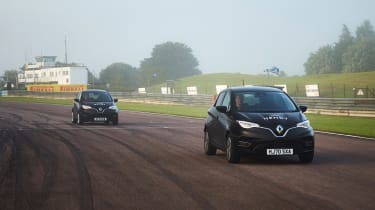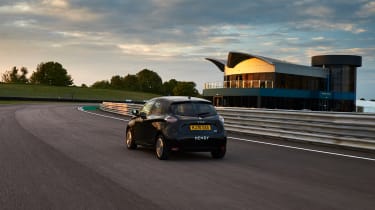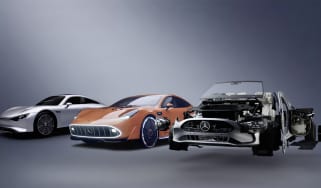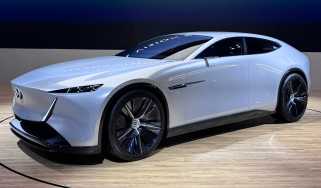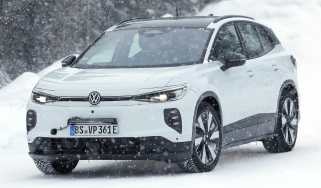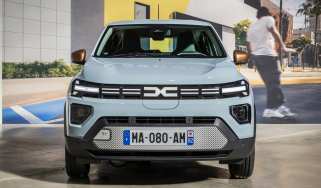What is hypermiling and how do you do it?
Hypermiling helps you get the most from every last drop of fuel to maximise MPG. We explain how it works, and how it can save you money…
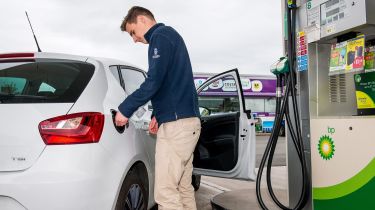
With high fuel prices being the bane of motorists’ lives in the UK, some drivers have started going to extreme lengths to get the best miles per gallon they can while driving their cars. In the US, this is known as hypermiling, but the techniques used by hypermilers to deliver fuel economy that exceeds manufacturer claims can be applied by every driver who wants to maximise their MPG. Even if you don’t want to go the whole hog, cherry picking a few hypermiling techniques can really give your fuel economy a boost.
The history of hypermiling
Hypermiling gained traction in the US when petrol prices went sky-high in the early 2000s. With high prices at the pumps, many drivers bought fuel-saving hybrid cars, like the Toyota Prius. And soon, fans of these more efficient cars tried to make them even more efficient, by using driving techniques that helped reduced the amount of fuel used even further.
Today, hypermiling is still a popular pastime with some drivers, there are MPG marathon events and hyper milers share their greatest feats of parsimony on social media, but it's something that can also be used in regular driving to help you maximise your fuel economy, no matter what kind of vehicle you're using.
What is hypermiling?
A hypermiler will start by evaluating whether they even need to drive at all - if a 5-minute drive can be replaced by a walk or cycle, then they'll do that instead. If they do need to drive, then they will plan a route that will be as direct as possible but that also needs the least amount of acceleration and braking. They will also try to drive at a time when traffic is less busy. Hypermiling is all about maintaining momentum, and the more braking and acceleration you do up hills or in heavy traffic, the less efficient your driving is.
A hypermiling car will be optimised to deliver the most efficiency, too. This means it will be well maintained and serviced regularly, while the tyres will be inflated to the correct pressure to ensure rolling resistance is at its most efficient. Any unused items in the boot will also be removed to save weight and thus improve fuel economy.
When parked, a hypermiler will try and use their location to their advantage. If it's cold, then they will park their car in the direction of the sun so that the sun melts a frosted windscreen, rather than turning on their heated screen. And if it's warm, they'll park in the shade so that the car's air conditioning doesn't have to work too hard to bring the cabin temperature down.
Some hypermilers will park in optimum positions so that they don't waste fuel with unnecessary manoeuvres out of parking spaces. Usually this involves parking 'face out' so they are moving forwards immediately, while some will park on downward slopes so that they can 'coast' away using as little fuel as possible, although it's not recommended because you are not in full control of a vehicle that's coasting.
On the move, hypermilers will drive slowly and steadily, and will use anticipation to plan their manoeuvres in advance, rather than reacting to what happens directly ahead of the car. Keeping speeds down boosts fuel economy considerably, although it's probably best to maintain a reasonable speed so as to not antagonise fellow road users.
Smooth inputs of the throttle and steering are used, while Driving Without Brakes (DWB) is a popular mantra with hypermilers, as they try and drive for as long as possible without touching the middle pedal. This means a hypermiler is more likely to be concentrating on the road ahead than the average road user, and should be less erratic, too.
When Mission Motorsport set an electric car range world record
The British armed forces represent the best of our country. Their training is unparalleled, their resolve unbreakable and the sacrifices they make unequalled. So when the team at armed-forces charity Mission Motorsport said they were going to break the Renault Zoe EV hypermiling record, it would take a brave person to bet against them.
The idea came about after charity founder and CEO James Cameron and his team became aware of a record set in 2018 on the Paris ‘Périphérique’ ring road. Frenchman Pierre Desjardins managed to cover 351 miles on a single charge in a 40kWh Renault Zoe, which had an official WLTP range of just 186 miles.
This meant the hypermiling record for the Zoe had been set at 7.9 miles per kilowatt hour. Mission Motorsport decided it would be fantastic if the record could be brought to the UK, so the team picked Thruxton Circuit in Hampshire, where Mission Motorsport was originally launched, as the location for their attempt.
“This place is special to us,” said Cameron, a former Major in the Royal Tank Regiment. “It’s the UK’s fastest circuit. If in 1994 Damon Hill was able to lap it in under a minute, setting an average lap speed of 147mph, we figured surely it can be the most economical.”
First, it was necessary to get some Renault Zoes, and dealer group Hendy was happy to supply two brand-new 52kWh cars, with an official range of 245 miles.
Mission Motorsport’s Zoes had an improved range over the car used to set the record in France, but the endeavour wasn’t without disadvantages. The French record had been set at a higher ambient temperature than the UK typically sees, and while Desjardins had to counter traffic, he was also able to slipstream lorries to help reduce wind resistance.
To make the task even harder, Mission Motorsport decided it wanted to keep its Zoes totally standard – the cars were brought straight out of the dealership and to the track, with nothing removed or streamlined. As such, one car was totally standard, while the other’s only modifications were the Enso tyres it had been fitted with, and both cars’ tyre pressures were unchanged from recommended levels. The cars would end up being run for more than 24 hours, with a total of six drivers taking it in turns. They would maintain a speed of 19-23mph, and followed racing lines that offered the path of least resistance as they went round the circuit.
The cars were guided by only their daytime running lights during the night, because the headlights would demand too much power – it was for the same reason that running the heating and air-conditioning systems was also forbidden. To help keep an eye on the cars as they drove through the night, Cameron borrowed some night-vision goggles from his former employer, the Royal Tank Regiment, which is based only a few miles from Thruxton.
It was at 6:33am on 10 June that the first car crossed the distance threshold of 351 miles. Behind the wheel at the time was Tristan Dover, a veteran of the Queen’s Royal Lancashire Regiment who completed seven tours of Northern Ireland. When he returned to civilian life, Dover was diagnosed with complex post-traumatic stress disorder and depression – something that Mission Motorsport has helped him overcome.
Dover came over to speak to us after he got out of the car – he was clearly exhausted from the hours of concentration, but also emotional after what he’d done. “You really get a sense of achievement,” he told us, as he explained how he and the other drivers had decided on a suitable speed and monitored what was happening.
“When I was coming up the hill, we put the car on cruise control,” Dover continued. “That was saving energy and getting better figures from the miles per kilowatt hour.”
Most of the time, however, cruise control wasn’t an option – the drivers had to focus to keep everything in check manually and make sure they continually followed the path of least resistance.
The hard work paid off, though. The first car ran out of juice at an impressive 424.7 miles, but the second with its Enso tyres achieved a staggering 475.4 miles – 230.4 miles more than the Zoe’s WLTP range, and a record-breaking, or even record-smashing, 9.14 miles per kilowatt hour. The driver of the latter vehicle at the end of its run was Mission Automotive’s account manager Tilly Lambert-Lee, whose husband is a serving Royal Engineer.
“It’s been amazing,” she told us. “But do you know what? If I knew what I know now, I would have offered to do an earlier shift! The heat was horrible yesterday – I was getting more and more tired, and struggling to focus.
“That bit there was even more stressful, though. The car was on one per cent and I thought we needed another four or five laps to get the record and it wasn’t going to make it!”
The car did make it, though, and now the Renault Zoe hypermiling record is held by the UK and, more specifically, by the team at Mission Motorsport.
Hypermiling controversy
Coasting is an issue that has made hypermilers the target of some controversy, though. Some extreme advocates of hypermiling have been known to put their car into neutral to save fuel by letting the engine idle on downhill sections, while some have reportedly turned the car off completely to save fuel (a technique known as Forced Auto Stop, or FAS). But this latter technique can be very dangerous, because turning the engine off can cut power to the servos that assist with braking and steering, and in some cases there's the risk of engaging the steering lock, too.
No driver should engage in this kind of coasting. Some modern cars feature technology that sees the engine reduce to idle as soon as the throttle is lifted, boosting efficiency in a safe, controlled manner and rendering coasting unnecessary anyway.
Another controversial hypermiling technique is drafting, or slipstreaming other traffic. This has its roots in Nascar racing and its fast superspeedways, where cars will line up in convoy bumper-to-bumper to help improve airflow and slice through the air. While Nascar racers are trying to go as fast as possible by reducing drag, hypermilers are using the disrupted airflow behind other vehicles to boost their economy – the lower air pressure behind a vehicle means the following one uses less energy to achieve the same speed.
However, in most instances this puts the hypermiler and the vehicle they are following in danger, because they will need to drive closely to the car in front to achieve their goal. They would be well within the 'two-second' golden rule set out for driving in dry conditions, which will reduce their reaction and braking time should the vehicle in front suddenly slow.
Again, responsible hypermilers frown upon this technique, and always recommend keeping a safe distance to the vehicle in front – you can save just as much fuel keeping a distance and anticipating what's going to happen by looking as far up the road as possible.
Top hypermiling tips for everyday driving
• Good maintenance. Keep your car well maintained with regular servicing and keep your tyres correctly inflated.
• Remove weight. Take out any excess weight, such as tools, bags, pushchairs, etc.
• Don't drive. If you're just going to be driving five minutes down the road, can you walk or ride a bike instead? If there's a bus route near your location that goes near your destination, would that be a better option?
• Park and ride. If you're heading to a city centre, then using the local park and ride will help you save fuel. Or you could carry a folding bike in your car, so that you can park out of town and cycle the final stretch. Or let the train take the strain for the remainder of the trip.
• Plan your route. If you have to drive, plan a route that is as short and flat as possible while avoiding potential traffic congestion.
• Reduce your speed. Travelling at 60mph on the motorway will see your economy improve significantly when compared to travelling at 70mph.
• Wear lightly soled shoes. Thin soles will give you a better feel of the pedals, allowing you to be smoother when accelerating and braking.
• Anticipate the road ahead. Look as far ahead as possible and you will be able to adjust your speed accordingly to allow for traffic lights, junctions and slowing traffic.
• Be smooth. Gentle throttle inputs and smooth steering keep your car stable, allowing you to maintain its efficiency.
• DWB - Driving Without Brakes. Try to drive for as long as possible without braking. This can help you save fuel and improve your anticipation of events occurring further up the road.
• Engine off. If you do end up being stopped in traffic, turn your engine off to save fuel.
• Climate control. In warm months with the air conditioning on, use recirculated air to cool the air in the cabin, rather than cooling the air coming into the car. When it's cold, park the car into the sun so that its rays defrost the windscreen, rather than using the heated screen.
• Park smart. Find a parking space that you can drive forwards out of, saving fuel by avoiding reversing manoeuvres.
Looking for a super economical car? Then take a look at the most economical cars on sale...




